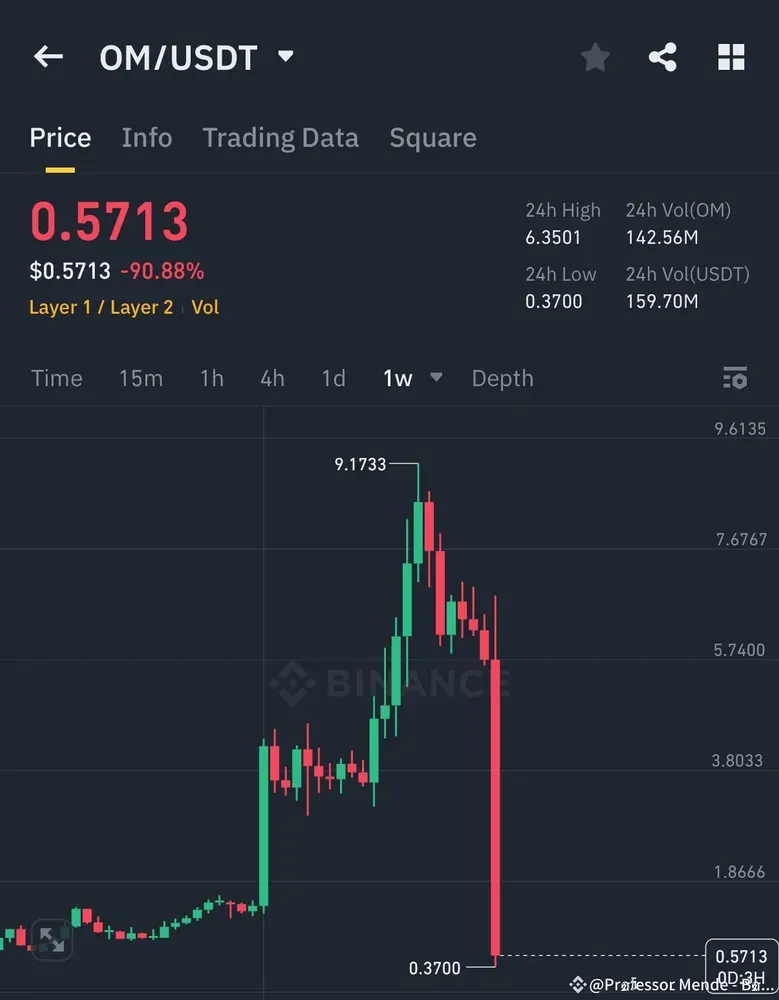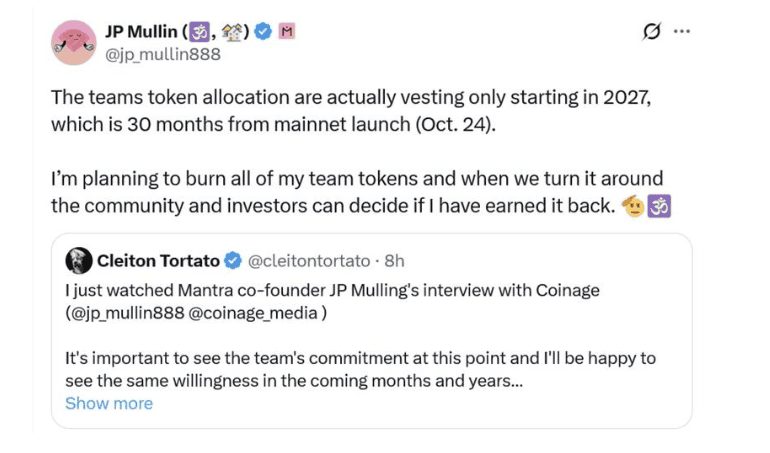Mantra's $OM - A case of poor market structure or insider panic selling?
Mantra coin crash in April: OM token dips 92% in 24 hours amid reckless liquidations and insider sell-offs.
By
•
5min
•
Apr 17, 2025
Mantra's $OM token - a top 50 coin and pioneer in the Real World Asset (RWA) movement, is now at the center of one of crypto’s most heated debates this quarter. It crashed quickly and violently on April 14, 2025. In just hours, $OM shed over 90% of its value and left retail investors reeling from the fallout. Speculation quickly mounted, with some pointing to on-chain activity that appeared unusual or poorly timed.
A thread by JP Mullin, co-founder of XBTO and SOMA.finance, fueled the fire with detailed on-chain analysis. Several addresses tied to early participants sold before the unlock. Whether this reflected informed portfolio management or structural risk remains under debate. People took notice. And many began asking if this was just bad liquidity management or something darker. Could it be insider advantage? Market making gone wrong?
The sell-off happened right after a scheduled token unlock in March, which added millions of OM to circulation. Timing hurt. Liquidity was thin. Buy support wasn’t strong enough to absorb the added supply, and pressure from above cracked the market open. Traders got caught. Liquidations rippled through as leveraged positions were wiped out across exchanges. Dominoes fell. Trust followed.
To address the rising backlash, Mantra CEO John Mullin took to a Cointelegraph AMA to explain the situation. He denied wrongdoing and reiterated that the transfers were used for borrowing, not dumping. According to Mullin, many of the token transfers were used as collateral not for dumping, but for borrowing. Positions were liquidated. Not premeditated but triggered by the market’s own weakness under pressure. Buybacks are planned. So is a recovery roadmap.

In a further move to restore confidence, Mullin has since pledged to burn all of his team tokens, which are currently locked and only set to vest starting in 2027. He says the community and investors can decide if he’s earned them back but only after the project proves itself again.
Still, questions remain about the structure and governance of Mantra’s tokenomics. Ownership remains highly concentrated, which some critics argue creates systemic vulnerabilities. With over 50% of the supply held by insiders, a handful of actors have enough leverage to sway the market - whether intentionally or not. That power distorts. And when price moves fast, the community sees shadows everywhere. Who knew? And when?
To some, this was just a poorly managed unlock in an illiquid environment. A mistake, not malice. A lack of foresight, not fraud. But for those who lost big, the distinction doesn’t change the outcome. Whether due to poor planning or structural flaws, the outcome has shaken trust. Rebuilding confidence in the RWA narrative now depends on transparency, accountability, and better tokenomic design.
The RWA narrative remains intact, but confidence in its early champions has taken a hit. If this is how institutional-backed projects behave under pressure, it raises deeper concerns about incentive design, liquidity management, and what decentralization really looks like when the chips are down. There are no definitive answers. Just more questions and a lesson the market won’t soon forget.